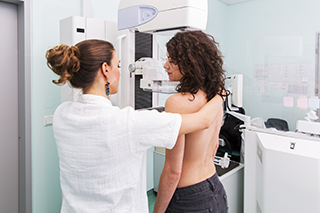If you’re at a high risk for breast cancer, it can seem like a death sentence. Luckily, you can reduce your chances of developing breast cancer, or increase your risk of catching it early, by understanding the research behind breast cancer development and breast cancer screenings.
Lifestyle Changes

Lifestyle changes can help you reduce your chances of developing breast cancer. For example, limiting alcohol, smoking, and exposure to radiation or environmental pollution has been shown to lower breast cancer risk. To further reduce your risk, stick to a healthy lifestyle to ward off the risk factor of obesity, making sure to include plenty of physical activity in your day.
Hormonal Changes

Having children young has been found to reduce your risk of developing breast cancer. Breast feeding has been proven protective as well, with this protection increasing based on the amount of time you have breastfed. Hormone replacement therapy (HRT) should be avoided as much as possible in women who are at high risk for breast cancer. Research shows that women who stop HRT have a decreased risk of developing breast cancer later in life.
Breast Cancer Screenings

If you are at a high risk for breast cancer, you can manage your risk by taking part in various breast cancer screenings and tests. The most basic breast cancer screenings are the breast self-exam and the clinical breast exam. A breast self-exam involves checking your own breast tissue, including the tissue under your arm and around your nipple, for lumps or irregularities. Your doctor can also perform a clinical breast exam, which follows the same protocol.
Beyond the basic breast exam, the most common screening test for breast cancer is a mammogram, which x-rays the breast tissue to find potentially cancerous masses. The American Breast Cancer Society recommends that all women begin getting an annual mammogram starting at age 40, but women with a higher risk of developing breast cancer (e.g., BRCA mutations, strong family history) may begin receiving mammograms years earlier. Mammograms can identify lumps in breast tissue up to two years before they can be felt by a breast self-exam.
If you are at high risk for breast cancer, your doctor may also recommend a magnetic resonance imaging test (MRI). This test uses a strong magnetic field and pulses of radio frequencies to produce an image of the breast tissue. An MRI is not a replacement for a mammogram, but it can be used in conjunction with a mammogram in order to identify masses that the mammogram missed or evaluate a mass that was hard to see on a mammogram.
Keywords: breast cancer, breast cancer screenings, risk of developing breast cancer, high risk for breast cancer
